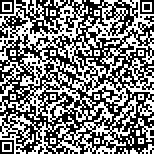| 引用本文: | 胡梅,.陈志芳,滕苗苗,李振南,顾艳柔,余颖聪.胃寒证模型大鼠代谢组学研究[J].中国现代应用药学,2024,41(22):21-28. |
| HU Mei,Chen Zhifang,Teng Miaomiao,Li Zhennan,Gu Yanrou,YU Yingcong.Metabolomics study of stomach cold syndrome model rats[J].Chin J Mod Appl Pharm(中国现代应用药学),2024,41(22):21-28. |
|
| |
|
|
| 本文已被:浏览 377次 下载 342次 |

码上扫一扫! |
|
|
| 胃寒证模型大鼠代谢组学研究 |
|
胡梅1, .陈志芳1, 滕苗苗1, 李振南2, 顾艳柔1, 余颖聪1
|
|
1.温州医科大学研究生培养基地温州市人民医院;2.上海大学
|
|
| 摘要: |
| 目的 通过构建大鼠胃寒证模型,分析该模型大鼠的尿液代谢物,以阐释胃寒证大鼠的代谢特征。方法 将20只雄性SD大鼠随机分为正常组,胃寒证模型组。采用5%醋酸和精炼猪油灌胃制备大鼠胃寒证模型,观察各组大鼠的一般行为学观察,14天后采集各组大鼠尿液,HE染色观察胃黏膜组织病理学变化,对尿液进行样品前处理,加入QC样本评价实验系统的稳定性和操作的可重复性,运用液相色谱-质谱联用技术进行数据采集,使用 Agilent Mass Hunter Profinder 软件提取代谢物的分子特征。将获得的数据集导入SIMCA-14.1执行PCA和OPLS-DA,根据OPLS-DA项目中变量重要性投影(VIP)大于1的差异变量,运用t检验对筛选到的差异变量进行验证,P<0.05的差异变量为筛选出的潜在标志物,将筛选出的潜在生物标志物运用Metaboanalyst 进行代谢通路分析,筛选出与胃寒证相关的代谢通路。结果 通过一般行为学观察和胃组织病理检查证实胃寒证模型建立成功。在PCA模型中对QC样品检测证明数据采集方法具有可靠性和重复性,PCA模型表明两组样本间尿液代谢物存在差异,OPLS-DA模型表明各组样本之间分离明显,存在一定的代谢差异。代谢标志物筛选中共有12个生物标志物,分别是硫脲嘧啶,6-甲巯基嘌呤,乙醇胺,肌酐,δ-己内酯,N-甲基烟酰胺,3-苯基苯甲醇,N1-乙酰基亚精胺,东莨菪内酯,N-乙酰-L-组氨酸。通过代谢通路分析发现D-葡糖胺-6-磷酸和雌三醇,D-葡糖胺-6-磷酸参与了丙氨酸,天门冬氨酸和谷氨酸代谢通路,雌三醇参与了甾类激素生物合成通路,乙醇胺参与了甘油磷脂代谢通路,D-葡糖胺-6-磷酸也参与了氨基糖和核苷酸糖代谢通路。结论 采用5%醋酸和精炼猪油灌胃可以成功构建大鼠胃寒证模型,本实验通过对大鼠尿液的代谢组学研究发现胃寒证大鼠代谢机制包括丙氨酸,天门冬氨酸和谷氨酸代谢、甘油磷脂代谢、氨基糖和核苷酸糖代谢、甾类激素生物合成4条代谢通路,涉及能量代谢、炎性反应调节等。 |
| 关键词: 胃寒证 动物模型 代谢组学 差异代谢物 代谢通路 液质联用技术 |
| DOI: |
| 分类号:R285.5;R |
| 基金项目:消化系疾病中西医结合智能化诊疗平台建设(No.2018008) |
|
| Metabolomics study of stomach cold syndrome model rats |
|
HU Mei1, Chen Zhifang1, Teng Miaomiao1, Li Zhennan2, Gu Yanrou1, YU Yingcong1
|
|
1.Postgraduate training base Alliance of Wenzhou Medical University, Wenzhou People’s Hospital;2.Shanghai University
|
| Abstract: |
| OBJECTIVE By constructing a rat model of stomach cold syndrome, the urine metabolites of the model rats were analyzed to explain the metabolic characteristics of the stomach cold syndrome model rats. METHODS Twenty male SD rats were randomly divided into normal group and stomach cold syndrome model group. The stomach cold syndrome model of rats was prepared by gavage with 5% acetic acid and refined lard, and the general behavioral observation of rats in each group was observed. After 14 days, the urine of rats in each group was collected, and the histopathological changes of gastric mucosa were observed by HE staining. The urine was preprocessed, and QC samples were added to evaluate the stability of the experimental system and the repeatability of operation. Liquid chromatography-mass spectrometry was used for data collection, The molecular features of metabolites were extracted using Agilent Mass Hunter Profinder software. The obtained data set was imported into SIMCA-14.1 to perform PCA and OPLS-DA. According to the difference variables with variable importance projection (VIP) greater than 1 in the OPLS-DA project, the screened difference variables were verified by t-test. The difference variables with p<0.05 were the potential markers screened. The potential biomarkers screened were analyzed by Metaboanalyst to screen the metabolic pathways related to stomach cold syndrome. RESULTS The establishment of stomach cold syndrome model was confirmed by general behavioral observation and gastric histopathological examination. The detection of QC samples in the PCA model proved that the data acquisition method was reliable and reproducible. The PCA model showed that there were differences in urine metabolites between the two groups of samples, and the OPLS-DA model showed that the separation between the samples in each group was obvious, and there were certain metabolic differences. There were a total of 12 biomarkers in the metabolic marker screening, which were thiouracil, 6-methylmercaptopurine, ethanolamine, creatinine, δ-Caprolactone, n-methylnicotinamide, 3-phenylbenzyl alcohol, N1-Acetylspermidine, scopolamine, n-acetyl-l-histidine. Through metabolic pathway analysis, it was found that d-glucosamine-6-phosphate and estriol, d-glucosamine-6-phosphate were involved in alanine, aspartic?acid and glutamic acid metabolic pathways, estriol was involved in steroid hormone biosynthesis pathway, ethanolamine was involved in glycerophospholipid metabolic pathway, d-glucosamine-6-phosphate was also involved in amino sugar and nucleotide sugar metabolic pathways. CONCLUSION Gastric perfusion with 5% acetic acid and refined lard can successfully build a rat model of stomach cold syndrome. In this experiment, through the metabolomic study of rat urine, we found that the metabolic mechanism of rats with stomach cold syndrome includes four metabolic pathways, including alanine, aspartate and glutamate metabolism, glycerophospholipid metabolism, amino sugar and nucleoside sugar metabolism, steroid hormone biosynthesis, involving energy metabolism, inflammatory response regulation, etc. |
| Key words: stomach cold syndrome animal model metabolomics differential metabolites metabolic pathway liquid chromatography-mass spectrometry |
|
|
|
|
